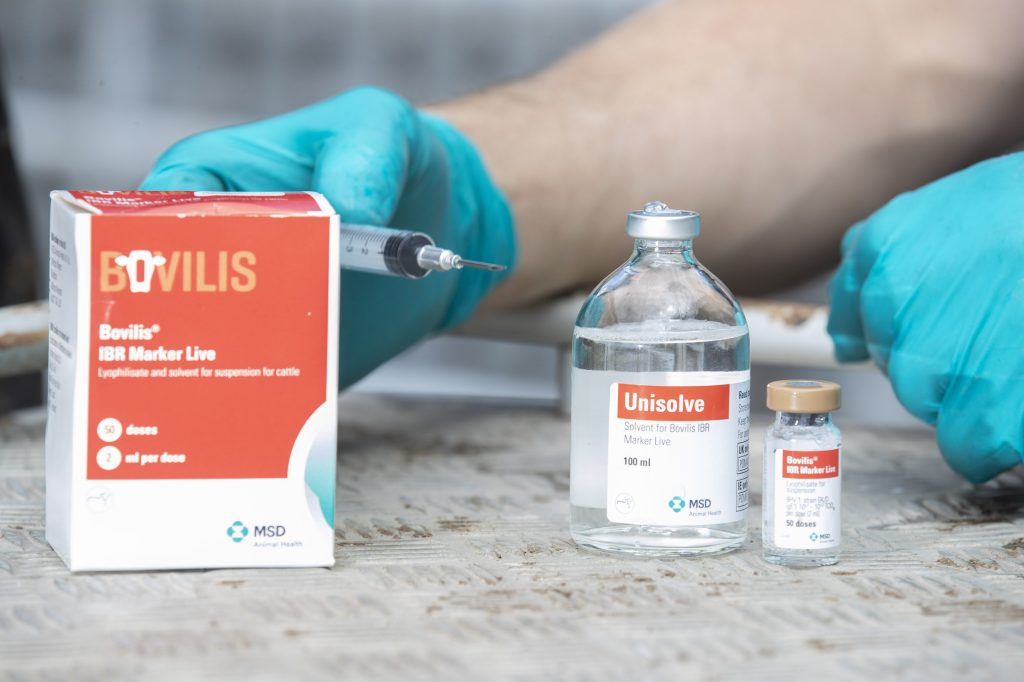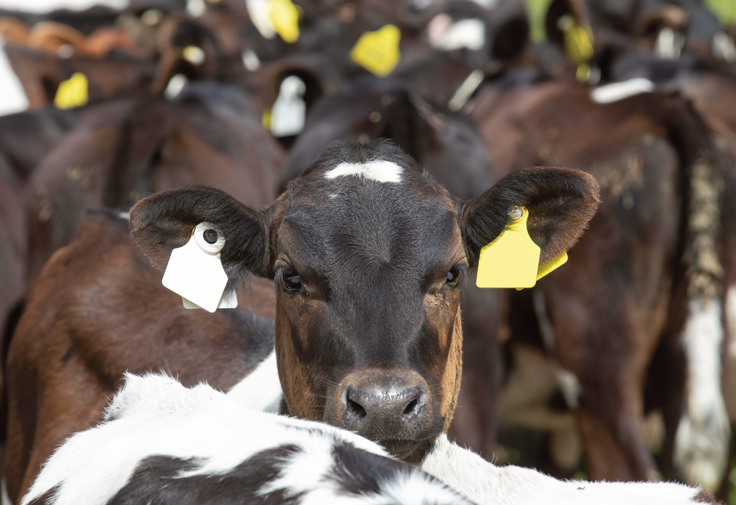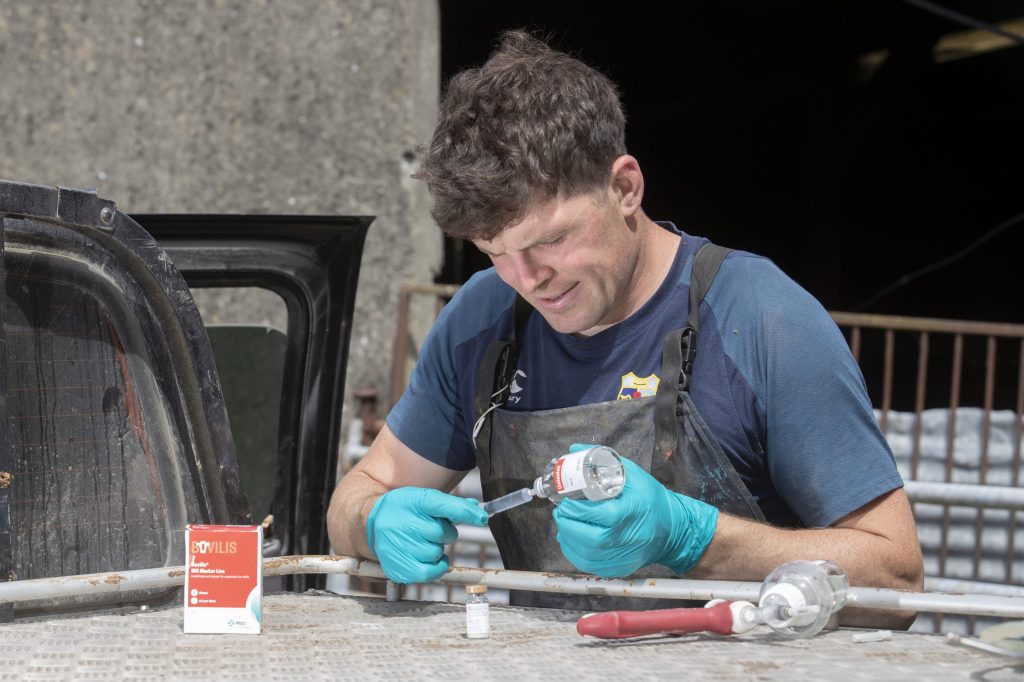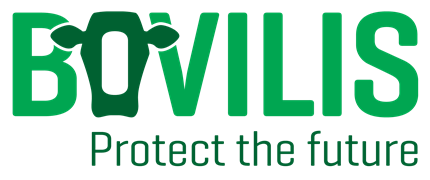Helena Madden MVB MRCVS Cert DHH Ruminant veterinary manager MSD Animal Health
IBR – Infectious bovine rhinotracheitis
Infection with IBR virus is widespread in the cattle population in Ireland, with evidence of exposure in over 70% of herds (both beef and dairy). It is capable of causing disease (both clinical and subclinical) resulting in significant economic losses at farm level through lack of production and treatment costs. The majority of infections are seen in cattle greater than 12 months of age, however all ages are at risk of IBR.

Clinical infections usually occur when animals are infected for the first time. Typical clinical signs include discharge from the eyes and nose, loud laboured breathing and high temperatures with resulting depression and reduced appetite. Milk yield may be affected, and abortion may also occur. Subclinical infections are those without overt clinical signs and for this reason may go unnoticed for some time in a herd. Subclinical IBR can result in losses of 2.6kg of milk/cow/day. Those infected for the first time shed high levels of the virus for approximately two weeks.
Once an animal has become infected with IBR virus, they will subsequently become lifelong latent carriers of the virus. At times of stress (e.g., mixing/housing/breeding/calving) the virus can reactivate, and those animals may shed again. Every time an animal sheds the virus it has the potential to infect more herd mates.
Control of IBR
There are three components to controlling this endemic disease.
- Biosecurity
- Culling
- Vaccination
Biosecurity
Biosecurity can be further divided into bio exclusion and bio containment.

Bio exclusion (the process of keeping disease out of a herd) is of particular importance in Ireland as many herds purchase cattle (e.g. the stock bull), avail of contract rearing for heifers, attend marts or shows. IBR can cross distances of up to five metres so neighbouring cattle during the grazing season can also be a source of infection or vice versa.
Bio containment (the process of reducing the threat of infection within a herd) relies mainly on herd management – segregating of age groups for example.
Culling
Culling of animals which have tested positive for IBR is a quick method to reduce herd prevalence. However, in many herds it is not a practical option as there are simply too many animals which are positive and therefore it would not be economically viable.
Vaccination
For effective control of IBR, vaccination must:
- Reduce the number of new infections – Main cause of virus spreading in a herd
- Reduce severity of clinical signs – Limit cost of disease impact

The time to start vaccination depends on the particular epidemiological situation of each farm. In the absence of virus circulation among the young calf group, vaccination is started at the age of three months, revaccination six months later and all subsequent revaccinations within 12-month periods. This will provide protection against IBR virus and minimise the number of animals that become carriers.

Bovilis IBR Marker Live
- Provides protection by reducing clinical signs and virus excretion.
- 2ml dose with a fast onset of immunity (four days after intranasal administration and fourteen days after intramuscular administration).
In summary, the majority of herds in Ireland are of medium or high seroprevalence. So vaccination with a live IBR marker vaccine combined with biosecurity are the most practical and appropriate control methods. Many herds may be prolonging the impact of IBR by only vaccinating the cows. This is controlling clinical signs and the impact of IBR on production but not necessarily reducing the spread (to unvaccinated younger cattle) and therefore the number of new infections each year. The aim of whole herd vaccination is to reduce the level of IBR in the herd over time and ultimately minimise the economic and production impacts of the virus circulating within a herd.
For more information: Contact your vet today




